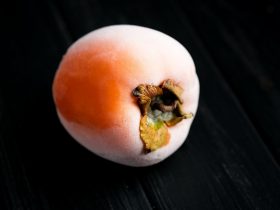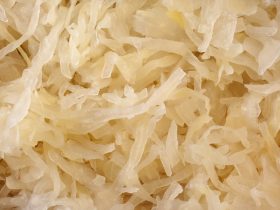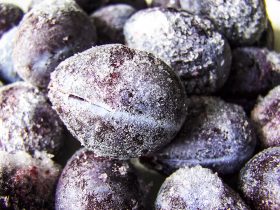Raw honey is often considered a superfood for its wide-ranging benefits to humans. Some of its many uses include sugar replacement, immune system booster, essential oil alternative, and skin moisturizer. It is then natural for people to want to freeze and store honey for longer use.
Freezing honey should be done under optimal conditions. Due to its low water content, completely solidifying pure honey through freezing is impossible to achieve. However, it is also absorbent to moisture; Monitoring its moisture content is therefore important to properly freezing honey and prolonging its life.
Honey’s natural properties prevent bacterial growth, allowing it to outlive humans. But shifting temperatures (from cold to hot and vice versa) can change its characteristics with adverse effects. A way to control the volatile shifts in temperature, and therefore have longer-lasting honey, is by freezing honey.
A few points to keep in mind: Low temperatures can cause crystallization, and crystallization can cause water levels to rise beyond acceptable levels. Proper sealing is also necessary to prevent the absorption of moisture. And while frozen honey is safe to eat in moderate amounts, warming honey is advisable prior to consumption.
Honey and its Natural Properties
Pure honey is made up of about 17-18% water, with the remaining portion largely comprised of carbohydrates such as glucose and fructose. Fortunately, leaving pure honey at ideal and stable temperatures will not alter its properties. The nutrients and quality of pure honey remain the same.
Storing pure honey in a freezer with temperatures from 50 °F to 70 °F (10 °C to 21 °C) will simply promote crystallization. Storing honey beyond those limits though, under lower temperatures such as below 50 °F (10 °C), will hold back the formation of crystals and turn it into an amorphous solid – a non-crystalline solid.
Another important consideration is honey’s pH level – which is between 3.5 and 5.5 – putting it on the scale of acidic. (Anything below a 7.0 pH level is acidic.)
The Absence of Bacteria in Honey
Due to its natural acidic pH level and low water content, the probability of bacterial growth is close to zero. Although acid does not kill bacteria, it does stop them from swimming and spreading; Bacteria also need moisture to grow.
Without bacteria, honey is able to last centuries, easily outliving humans and other species. An often-cited example is the archeological discovery of 3-millennia-old (3000 years) pure honey in a tomb during a 2015 exploration in Egypt.
Although freezing honey can cause it to crystallize, the crystallized honey is safe to eat. Cold temperatures do not harm the quality and nutritional content of honey as long as it is properly stored in an airtight container that prevents moisture from coming in. Moisture above the acceptable levels though will stimulate the growth of bacteria and begin the fermentation process.
More on Crystallization in Honey
When pure honey is stored at crystallization temperatures (50 °F to 70 °F, 10 °C to 21 °C), its sugars start to separate from the water in a process called crystallization.
Crystallization in honey is, in fact, a good sign of its pureness and authenticity. On the other hand, processed honey takes longer to crystallize because the pollen grains, and other small particles where crystals begin formation, have been filtered and reduced.
The speed of crystallization also depends on the dominant type of simple sugar in the honey, as well as the level of moisture content. Specifically, honey that contains more glucose will crystallize faster than honey high in fructose. (The pollen collected by the bees is a major determinant of the natural composition of honey, whether high in glucose or fructose.)
Needless to say, crystallization should be monitored. Yeast is one of the few things that have the ability to grow in honey, but it requires sufficient moisture content. And crystallization may cause moisture content to rise to levels that promote yeast formation.
The Hygroscopic Attribute of Honey
Although honey’s natural state inhibits bacterial growth, it is also hygroscopic. Hygroscopy is the tendency to absorb moisture from the air. Considering the unfavorable effects of moisture in honey, the hygroscopic attribute works against the long life of honey.
Raising the moisture content of honey to above 25% will activate the fermentation process, promoting bacterial and yeast growth, and shortening the life of honey.
Honey’s high sugar content makes it a powerful absorptive substance to moisture. This highlights the importance of proper containers when storing honey. Otherwise, gaps and holes allow the honey to start absorbing moisture from the atmosphere. Proper storage conditions include the use of glass over plastic, as well as conditions that lessen changes in temperatures.
Ideal Storage Conditions for Honey
Properly stored honey under controlled conditions allows it to maintain its natural attributes. These natural attributes include its taste, appearance, and nutritional value. Honey that maintains these attributes lasts longer, with its health benefits also intact.
Air-tight tempered glass is preferred over plastic containers when freezing honey. Plastic is typically porous and its tiny holes allow moisture and vapor to seep in.
If plastic containers are the only available option, consider using an additional sealed plastic bag for some added protection. This prevents the moisture, and odors for other stored food, from penetrating the plastic container and contaminating honey.
Accordingly, also examine the use of separate freezers exclusive to the freezing of honey. Not only will this prevent the potential contamination from other stored food, but it also averts fluctuating temperatures from accessing the freezer at inopportune times. Although possibly cost-prohibitive, examine the tradeoff between probable contamination and the increased costs of buying separate freezers.
Expansion in Freezing Honey
When storing honey in a container for freezing, it is also advisable to leave a little air gap.
Freezing honey does not result in substantial expansion, at least not how water expands to ice. As a matter of fact, the ability of honey to expand under colder temperatures will be very limited due to its low water content.
But the minute expansion when freezing honey may be enough to break its container.
Safety of Frozen Honey
Consuming frozen pure honey is as safe as consuming honey stored at room temperature; But the key is in moderation.
Unpasteurized honey, or honey that has not been heated to kill microorganisms, may contain spores of clostridium botulinum bacteria. Consuming too much honey may increase the risk of contracting botulism.
According to the Center for Disease Control and Prevention, or CDC, “botulism is a rare but serious illness caused by a toxin that attacks the body’s nerves and causes difficulty breathing…” (Read more About Botulism at CDC’s website.)
The recommended daily intake for honey is one tablespoon, which is estimated to contain about 17 grams of sugar and 65 calories. But consuming frozen honey invokes a lack of restraint, much like the challenges of monitoring fruit intake when drinking fruit shakes. Otherwise, honey, frozen or not, is safe to eat in moderate amounts.





Hi, I'm Dom
Dom Eats was started to help other people fall in love with food. While cooking can feel intimidating, it doesn't have to be.